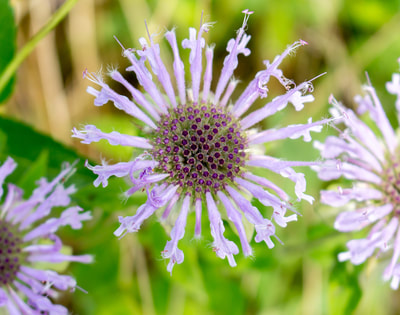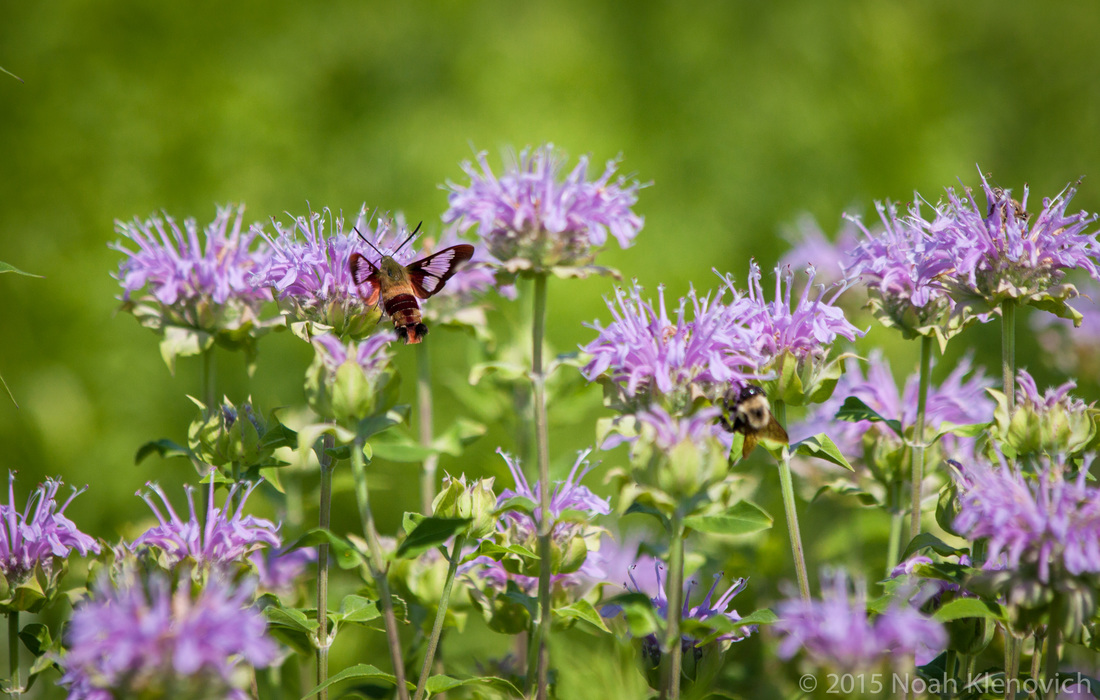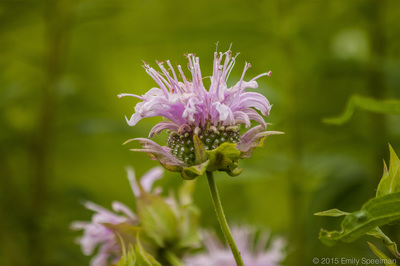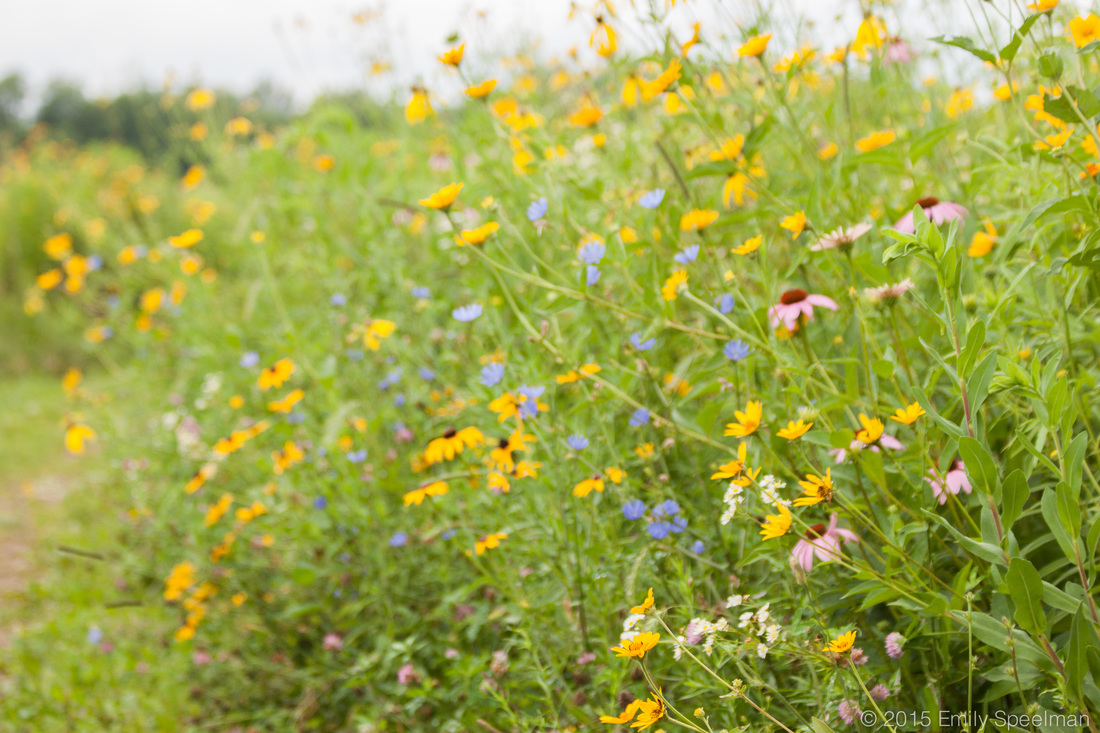|
Bee balm aka Wild Bergamot is a native perennial growing in meadows, prairies, and wildflower gardens - due to its showy appearance.
This flower is great to have around as an excellent source of pollen for birds, hummingbirds, and butterflies all while being resistant to the nibbles of deer. Along with being a great flower for our pollinators, the leaves have been used to make tea as well as a seasoning. Medicinally the oil from the leaves was used to treat respiratory ailments, leaf tea for colic, flatulence, colds, fevers, stomach aches, nosebleeds, and insomnia. Pulticed leaves could cure headaches. Boiled leaves could also dry up pimples. And it looks very cool!
1 Comment
You have probably seen one before and just didn’t know. If you’ve ever been in your flower garden or near a buzzing field of wildflowers on a sunny, summer day and said to yourself, “well, that’s a funky lookin’ bee”. Congratulations! You’ve just spotted a humingbird moth! Or, more accurately, a Hummingbird Clearwing, a moth in the genus Hemaris. There are 3 Hemaris species that occur in this region, those being the hemaris thysbe (Hummingbird Clearwing, shown here), Hemaris diffinis (Snowberry Clearwing) and Hemaris gracilis (Slender Clearwing). The differences between each are very subtle amounting to a mere patch or band of color on the underside. The olive-green into burgundy coloring on the thorax and abdomen would make a pretty decent color combination for any football team and the hues of red and brown on the edges of the wings are pretty snazzy as well but arguably the most interesting feature of this moth are the clear patches. As you can see the clearwings are diurnal (daytime) moths and using their proboscis to feed on nectar from trees and flowers such as honeysuckle, hawthorne and snowberry. This one in particular was loving his bee balm. Clearwings are normally found in any of the usual places you would expect bugs; second-growth forests, meadows and, occasionally, your very own garden. Though it is commonly mistaken for a bumblebee one of the easiest ways to spot the difference is that while bees will land on the flower to collect pollen the clearwing will not. It will remain in flight for the duration of it’s feeding in the same manner of a hummingbird. Thus leaving little wonder how it got it’s name.
They are migratory which means that they are only here during the warmer months (April-August), so what are you waiting for? Go out and find one while they’re still here! -Noah Klenovich is an amateur photographer and nature enthusiast. You can view his work at nklen.smugmug.com
Wild Bergamot - Purple Bee-Balm - Monarda fistulosa L.
This plant with its 'crazy hair' and tall stem is a favorite of bees and hummingbirds, but if we look further down the stem we'll find it has sets of paired leaves, a slight green/gray color... this is the part of the plant to gather. I say gather after everything has been taken into consideration... if this is a rare plant in your area, leave it alone, if it is a common one, gather responsibly - take only what you will use in the time it will be fresh. This is a potent plant so a little will go a long way! I list the Latin in the title of the plant to differentiate it from the Bee-Balm plant Monarda didyma which is red in color, still safe and can be used in the same manner, but it's good to be aware of the differences. Now then, you've found this interesting plant, it's in vast abundance locally, what now? Through the years it has been used for many purposes...
Depending upon the variety of wild bergamot, flavor varies. Those with high thymol content are used as a thyme substitute, but the Monardas do not have GRAS status (FDA generally recognized as safe). Pleasant teas are made from leaves or flowers. Current medicinal uses are much the same as historic applications. Wild bergamot is used for aromatherapy and fragrance, and flowers are included in fresh bouquets or dried for crafting. Fun fact, Native American bergamot tea drinkers shared this delectable tea with colonial settlers, who then used it as a substitute when imported tea became scarce after the Boston tea party. Bergamot Tea 1/4 Cup of fresh Bergamot Leaves 1 Cup boiling water or 2 Tablespoons of dried Bergamot Leaves 1 Cup boiling water Pour water over tea leaves, let sit about 5 minutes before straining out leaves, add local honey or fresh lemon juice if desired, it is now ready to drink! |
AboutSince 2015 we have been exploring and sharing all the amazing things we’ve found in nature. AuthorEmily is an Ohio Certified Volunteer Naturalist who is most often found out in the woods. Archives
June 2024
Categories
All
|











 RSS Feed
RSS Feed